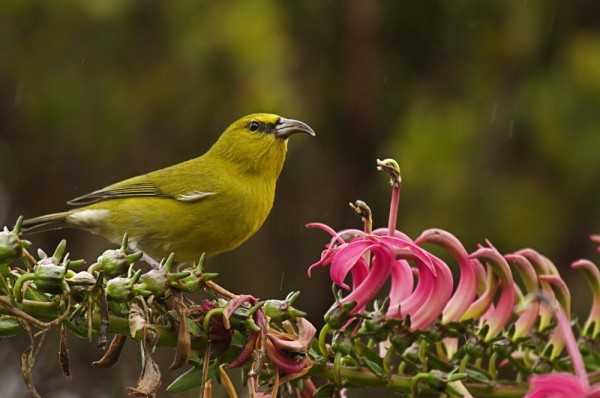By Ana Verayo, | September 08, 2016

Historically abundant and widespread on the island of Kaua‘i, the population of Kaua‘i Amakihi, like other native Hawaiian forest birds, is now largely restricted to high elevation forest habitats.
An alarming discovery reveals how majority of forest birds that are native the island of Kaua'i in Hawaii are now on the brink of extinction, as multiple species are predicted to disappear in the next few decades.
Scientists showed how several bird species are now suffering from rapid population declines due to diseases triggered by climate change.
Like Us on Facebook
Researchers from the USGS (United States Geological Survey) Pacific Island Ecosystems Research Center conducted surveys among these bird populations on Kaua'i Island beginning from 1981 to 2012. Past surveys about these bird ecosystems and populations included data that has been last updated in 2000. This outdated data revealed "cautiously optimistic" results about the survival rates of these birds but this new study says otherwise.
New findings showed that there are six species of Hawaiian honeycreepers that are suffering from population declines reaching up to 94 percent. The largest declines apparently occurred in the past ten years, where populations fell dangerously low at 5.7 times faster during 2000 to 2012.
The major cause of this decline is due to widespread diseases, particularly avian malaria that has been known to be triggered by warming temperatures. Due to climate change, warmer temperatures in the region triggered the growth of mosquitoes in their habitats, as they spread this deadly disease.
Researchers have indicated in their findings that this rapid collapse of native avifauna in the island corresponds to the changing climate and prevalence of disease. There may be multiple factors that are also affecting the populations, but a suggested tipping point has been crossed, where temperatures of forest habitats in high elevations already reached a threshold.
This threshold now encourages the development of avian malaria throughout the species' range and if declining trends continue, multiple bird extinctions will occur in the next decades.
Scientists believe that this is an early warning for other bird communities in neighboring islands such as Maui. Researchers are also concerned about how rapid multiple bird population declines can also hurt the island's ecological diversity and ecosystems.
This new study is published in the journal, Science Advances.
-
Use of Coronavirus Pandemic Drones Raises Privacy Concerns: Drones Spread Fear, Local Officials Say

-
Coronavirus Hampers The Delivery Of Lockheed Martin F-35 Stealth Fighters For 2020

-
Instagram Speeds Up Plans to Add Account Memorialization Feature Due to COVID-19 Deaths

-
NASA: Perseverance Plans to Bring 'Mars Rock' to Earth in 2031

-
600 Dead And 3,000 In The Hospital as Iranians Believed Drinking High-Concentrations of Alcohol Can Cure The Coronavirus

-
600 Dead And 3,000 In The Hospital as Iranians Believed Drinking High-Concentrations of Alcohol Can Cure The Coronavirus

-
COVID-19: Doctors, Nurses Use Virtual Reality to Learn New Skills in Treating Coronavirus Patients







